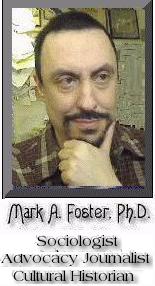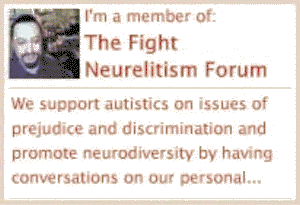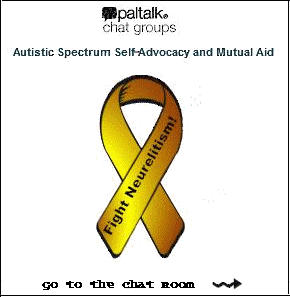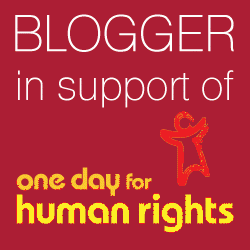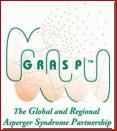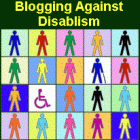A Short History of the Autism Diagnosis
The following is from one of my books:
Psychiatry and abnormal psychology are relatively new fields. In many traditional societies, children and adults with cognitive or behavioral differences were treated as demon possessed, not as the patients of clinical practitioners. Although I was, fortunately, spared an exorcism, the electrical convulsive therapies I received were, metaphorically or poetically, close. Before the rise of the pro-eugenics, yet comparatively humane, mental (or social) hygiene movement, which gave birth to psychiatry and abnormal psychology, conditions like Autism would, indeed, have been literally treated as cases of demonic possession.
According to Dr. D.K. Shute, Benjamin Rush (1746-1813), one of the signatories to the Declaration of Independence, began reforming the treatment of “the insane”:
It will do no harm to recall the fact that an American, Benjamin Rush [1746-1813], started [a] … reform in treating the insane, not as demon-possessed individuals who should be chained and locked in cells, but people, simply, who had a disease of the brain.Dr. D.K. Shute, “American Medico-Psychological Association: Proceedings of the Sixty-third Annual Meeting.” May 5, 1907. The American Journal of Insanity. Volume LXIV. Baltimore, MD: The Johns Hopkins Press. 1907-1908. Page 162.
The American Psychiatric Association (1921) was founded in Philadelphia as the Association of Medical Superintendents of the American Institutions for the Insane (1844). It was later renamed the American Medico-Psychological Association (1892). The organization published a diagnosic manual in ten editions between 1918 and 1942. It was chronologically titled: Statistical Manual for the Use of Institutions for the Insane (1918), Statistical Manual for the Use of Institutions for Mental Diseases (1920), Statistical Manual for the Use of Institutions for Mental Defectives (1941), and Statistical Manual for the Use of Hospitals for Mental Diseases (1942).
The 1918 release of the first edition, Statistical Manual for the Use of Institutions for the Insane, was announced on page 288 of The American Journal of Insanity (later changed to The American Journal of Psychiatry) and is included in this volume. According to that first edition, Autism is a characteristic of dementia praecox (New Latin, dēmentia praecox, madness premature), the original term for schizophrenia:
15. Dementia PraecoxThis group cannot be satisfactorily defined at the present time as there as there are still too many points at issue as to what constitute the essential clinical features of dementia praecox….… The term “schizophrenia” is now used by many writers instead of dementia praecox….Appearance of autistic thinking and dream-like ideas, peculiar feelings of being forced, of interference with the mind, of physical or mystical influences, but with retention of clearness in other fields (orientation, memory, etc.).Committee on Statistics of the American Medico-Psychological Association (now the American Psychiatric Association) in collaboration with the Bureau of Statistics of the National Committee for Mental Hygiene (developed into the National Association for Mental Health and, later, the Mental Health Association), Statistical Manual for the Use of Institutions for the Insane. New York. 1918. Page 24.
Through the Diagnostic and Statistical Manual (DSM) of the American Psychiatric Association, my own diagnosis has changed, in both name and description, several times over my life:
- The first version of the DSM (1952), which was initially used to diagnose me, was a revision of the previous manual (1918-1942). In the DSM, dementia praecox was changed into a schizophrenic spectrum. Autistic children could be diagnozed with either schizophrenic reaction, childhood type (my original diagnosis and, I believe, the diagnosis of most Autistic children) or schizoid personality. On the other hand, Autistic adults could be diagnosed with either schizophrenic reaction, paranoid type or schizoid personality. At the time, Autism was commonly regarded as a reaction to living with a refrigerator mother.
- In the DSM-II (1968), two out of the three designations changed slightly: schizophrenia, childhood type (my own diagnosis), schizophrenia, paranoid type, and schizoid personality.
- Using the DSM-III (1980), my guess is that I would have had childhood onset pervasive developmental disorder. Schizoid disorder of childhood or adolescence is also, I suppose, a possibility. However, I was not diagnosed with schizoid personality under the DSM-I and DSM-II. Infantile autism appears a bit too extreme.
- Based upon the DSM-III-R (1984), my diagnosis might have been either autistic disorder or pervasive developmental disorder not otherwise specified (PDDNOS). The DSM-III-R eliminated schizoid disorder of childhood or adolescence. Its symptoms were reinterpreted as indistinguishable from a pervasive developmental disorder. Since singling out a pervasive developmental disorder based upon age of onset was determined to be invalid, childhood onset pervasive developmental disorder was merged with infantile autism, also from the DSM-III, to create autistic disorder in the DSM-III-R.
- The DSM-IV (1994) and, subsequently, the DSM-IV-TR (2000), continued using autistic disorder and divided PDDNOS into multiple types, including Asperger’s disorder and the new PDD-NOS (pervasive developmental disorder not otherwise specified). I was diagnosed by my new psychiatrist with either high-functioning “Autistic disorder” or Asperger’s disorder. He regarded those two categories as functionally identical for an adult.
- Finally, autism spectrum disorder (ASD) is the new classification used in the DSM-5 (2013). That term, with its three levels (1, 2, and 3), has replaced all of the previous types of Autism, as well as pervasive developmental disorder. Presumably, I was at level 2 as a child. For the first time, with the DSM-5, developmental criteria can be considered when diagnosing an Autistic adult. The DSM-5 authors also recommended that anyone with a prior diagnosis of autistic disorder, Asperger’s disorder, and PDD-NOS now be given a diagnosis of ASD.

